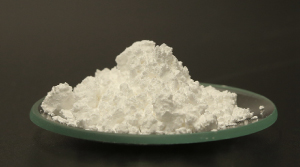Lutetium oxide (Lu2O3) is the oxide form compound of one of the rare earth metal lutetium. Lutetium oxide has also different names like lutecia and lutetium sesquioxide. Lutetium oxide has a white color. Lutetium oxide is not soluble in water. Lutetium oxide has a cubic crystal structure. 2487oC is the melting point, which quite high enough, of lutetium oxide compound. Due to lutetium oxide’s air sensitivity lutetium oxide is compatible with strong oxidizing agents. Therefore, there is need for lutetium oxide to be avoided from moisture and carbon dioxide. Moreover, lutetium oxide is the one of the promising laser host materials for high power and ultrashort pulse lasers. Lutetium oxide has a wide band gap (5.5eV).

Lutetium oxide is used as cracking, alkylation, hydrogenation and polymerization
Lutetium oxide is used as specialty in ceramics, glass, phosphorous and lasers
Lutetium oxide is used as starting material in the production of laser crystals
Lutetium oxide is used in X-ray applications
Comments
Post a Comment